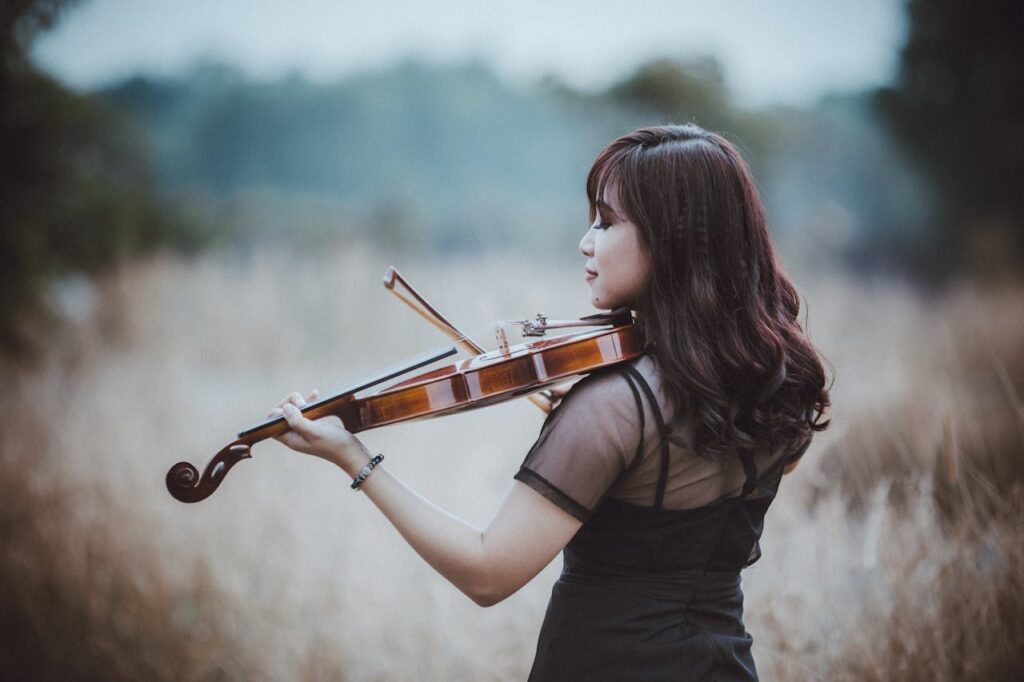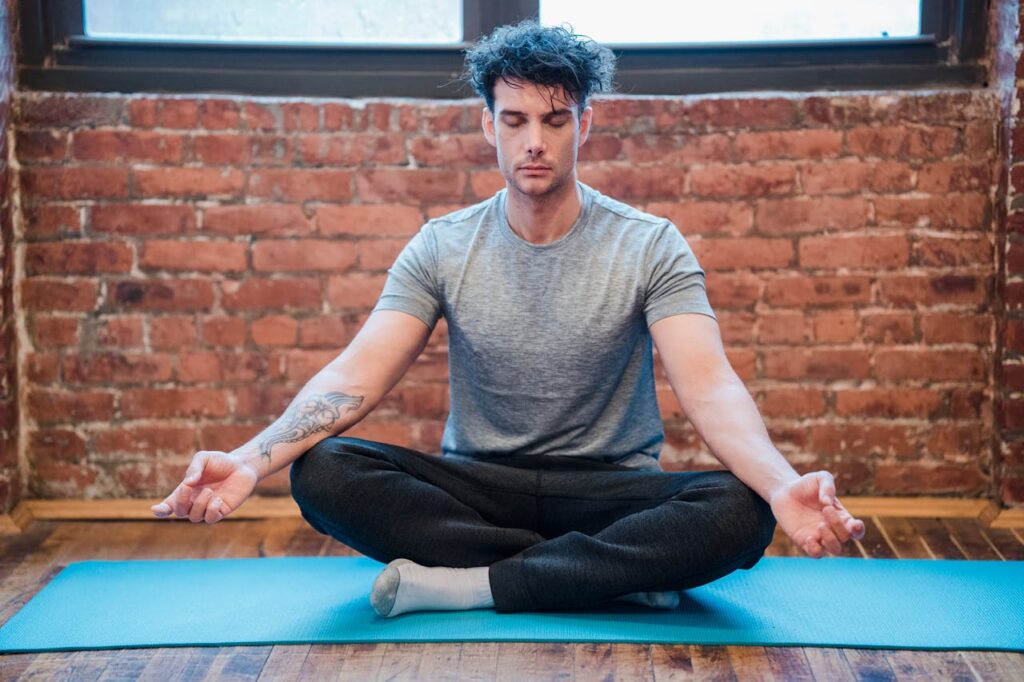Mind – The Biggest Asset
Are you looking to develop mindfulness within yourself?
One of the easiest ways to do it is by asking yourself the seven questions for mindfulness.
But before doing that, let’s begin by understanding the human mind and how to use it more efficiently.
Do you know that your mind is the biggest asset you have?
Everything you think, feel, see, say, or do first gets created in your mind.
And then these thoughts, feelings, pictures, words, and actions start shaping your life.
It means that if you can control your mind, you can start to have greater control over your life.
And the way to control our mind is by developing ‘Mindfulness’ within yourself.
Mindfulness is being completely alert and aware of what is going on in your mind, body, and surroundings.
To be precise, mindfulness is the art of being entirely present.
By becoming mindful, you can take note of everything happening within and around you.
So, what you need to do is to become aware of yourself, both internally and externally.
When you are, you develop greater control over yourself and become capable of improving your current situation.
So, the question we need to answer is, how do we become aware or mindful?
There are many ways to do it.
Let’s do it by asking ourselves some helpful questions for mindfulness.
These questions for mindfulness will help you develop mindfulness in a simple yet exciting way.
Questions For Mindfulness

There are seven questions for mindfulness that you need to ask yourself.
Are You Calm?
The first of the seven questions for mindfulness is whether you are calm.
Calmness is foundational and one of the most essential things required in developing mindfulness within yourself.
If you have the habit of getting annoyed or angry due to every little thing, mindfulness cannot become a possibility for you.
It’s because angry people have fear within themselves, which is a significant hindrance to mindfulness.
Anger sabotages all your spiritual possibilities, including mindfulness, in a big way.
It “shuts you out” and sends you down the wrong path.
Thus, it would help if you became stronger to gain greater control over your mind.
Doing this requires you to relieve your fears and become calm and comfortable.
If it is difficult for you to stay calm, you should start practicing meditation.
It will gradually release your fears and open your mind, making you capable of mindfulness.
When you are calm, you have answered the first of the seven questions for mindfulness.
Are You Steady?

The second of the seven questions for mindfulness is whether you are steady.
Calmness is just a foundational need that starts the process of becoming mindful.
In other words, calmness prepares you and lays the path to mindfulness.
But the first real contributor to becoming mindful is your steadiness.
By steadiness, I mean the steadiness of your body and mind.
The steadiness of your mind & body gives you the perfect inner condition to start building mindfulness within you.
It keeps distractions away and prepares you to focus on the essential things, i.e., thoughts, feelings, sights, words, and actions.
There is only one way to develop steadiness within yourself – practice.
So, sit in a meditative position or any other comfortable position of your choice and keep your body steady.
It may be challenging initially, but keep at it patiently until your body becomes steady.
Do not be in a hurry to make it happen.
Take your time to let it develop naturally over a few days or weeks.
When you have made your body steady, your mind will follow and catch up slowly.
You must be patient in letting your mind become as steady as your body.
Like your body, you may initially find it slightly difficult to keep your mind steady, but it will come to you with time.
When you are entirely steady, you have answered the second of the seven questions for mindfulness.
Are You Open?
The next of the seven questions for mindfulness is whether you are open.
Many times, in a bid to become steady, you may become “closed.”
By closed, I mean you may try too hard to be steady and put too much pressure on the mind and stress on the body.
As a result, this unnatural effort to steady yourself makes your mind jammed and your body tight.
Becoming closed would make you more distant from mindfulness.
Thus, it’s crucial to steady yourself the right way.
Steadying yourself means to make yourself unmoving while still having an open mind and body.
So, do not try too hard to steady your body or mind.
The only way to do this is to keep trying and improving until you become steady naturally.
If you are not open and natural, it would make mindfulness a challenging task.
So, make sure that you are steady and open at the same time.
When you are open, you have answered the third of the seven questions for mindfulness.
Are You Focused?

The next of the seven questions for mindfulness is whether you are focused.
When you are calm, steady, and open, it’s time to start building mindfulness within yourself.
So, the first thing you need to do to become mindful is to be focused.
By focus, I mean you don’t have to try to be mindful of everything at once.
To be precise, you don’t have to aim at becoming mindful of your thoughts, feelings, sights, words, and actions all at once.
You have to build mindfulness of all these things, but individually.
So, focus means that you first have to focus on only one of these things in a given moment, let’s say ‘your thoughts.’
So, focus only on your thoughts and forget about all the other faculties for now.
When you are focused, you have answered the fourth of the seven questions for mindfulness.
Are You Observant?
The next of the seven questions for mindfulness is whether you are observant.
Once you have decided to focus on your thoughts, you have to start observing them.
So, you have to observe the thoughts generated in your mind.
After observing your thoughts, you need to discard the irrelevant ones and retain the relevant ones.
Now, you will be focused only on these relevant thoughts for you.
You will continue doing this until you can observe the relevant thoughts clearly and comfortably.
The idea here is to remove these thoughts’ vagueness or haziness.
They should become entirely discernible for you.
When you have developed reasonable clarity of thought, you have created the ability to observe your thoughts well.
When you are observant, you have answered the fifth of the seven questions for mindfulness.
Are You Analytical?

The next of the seven questions for mindfulness is whether you are analytical.
You are now both focused on and observant of your thoughts.
The next thing you need to do is to analyze your thoughts.
To analyze them, you must find the source of the thoughts generated in your mind.
Alternatively, you have to think about why a particular thought came to your mind in the first place.
You also have to find the purpose of these thoughts.
Once you know the source and purpose of your thoughts, it will be easier for your mind to remove or drop random thoughts with less important sources or purposes.
It will help you filter your thoughts further, eventually simplifying the process of mindfulness.
You can then enhance the quality of your mindfulness, as there will be fewer thoughts to manage.
The point to note here is that although you are mindful of the most crucial thoughts, you are also aware of the other lesser critical thoughts in your mind.
It is the essence of mindfulness.
You must repeat the ‘focus,’ ‘observation,’ and ‘analyze’ steps we did for ‘thoughts’ for all your other faculties, i.e., feelings, sight, words, and actions.
The process will remain similar to the one you followed for ‘your thoughts.’
To clarify things, let’s take the example of another faculty: ‘your sight.’
You can focus on your sight when you have built calmness, steadiness, and openness within yourself.
So, you now have to focus solely on your sight or what you see in the present moment and forget about the rest of the faculties.
Next, you have to observe what is in front of you.
So, observe where you are right now.
Look at everything around you, one by one, consciously naming each thing you encounter.
It makes you perfectly aware of every single thing that is present around you.
Once you know your surroundings, the less important things will lose your attention, and you will only be staring at the most important things.
Suppose this most essential thing is a world map.
You must ensure that every part of the map is visible to you.
When it is, you are ready to analyze this world map you are looking at.
First, you need to know why you are looking at this map and what the purpose behind doing this is.
Maybe your curiosity or thirst for knowledge made you stand in front of this world map.
And doing so may be to find the USA on that world map.
So, to find the USA, you will go through the map and “drop” other nations on it.
You may be interested in other nations on the map, but you drop those nations from your view to get to the USA.
It filters out the rest of the nations on the world map and helps you become mindful of the USA.
You can then become more mindful of the USA on the world map by exploring it further, i.e., by looking at its states.
And by doing so, you further enhance the level or quality of mindfulness of your sight.
But remember, although you are looking at only the most essential thing to you, you are also mindful of everything around you, though not to the same degree.
This way, we will develop the highest quality mindfulness for the rest of the faculties.
When you are analytical, you have answered the sixth of the seven questions for mindfulness.
Are You Connecting The Individual Mindfulnesses?
The last of the seven questions for mindfulness is whether you are connecting the individual mindfulnesses.
Connecting the individual mindfulnesses will help them function together to give you your “aggregate mindfulness.”
It is probably the most important of all the questions for mindfulness.
So, let’s break it down.
When you have become mindful of your thoughts, feelings, sights, words, and actions, the next step is to connect them all.
It will help you be mindful of all of your faculties simultaneously.
In other words, it will represent a holistically mindful version of you.
When you have become holistically mindful, you can use this ‘wholesome wisdom’ to put your best foot forward.
Connecting your mindfulness of your thoughts, feelings, sights, words, and actions will help you make the best possible decisions for yourself.
By being able to do so, you will achieve the ultimate objective of mindfulness in your life.
When you have connected the individual mindfulnesses, you have answered the last of the seven questions for mindfulness.
Befriend Your Mind

Mindfulness is an advanced meditation capable of giving you the best possible life.
These seven questions for mindfulness help you do precisely this.
But to practice it, you must first develop a reasonable amount of control over your mind through simple meditation.
So, before you ask yourself these seven questions for mindfulness, remember to befriend your mind first.
Once that happens, your self-love will rise, which will help you develop mindfulness in your life.
Mindfulness will make your life the one you have always dreamt of living.
So, use these seven questions for mindfulness to start living your dream life.


